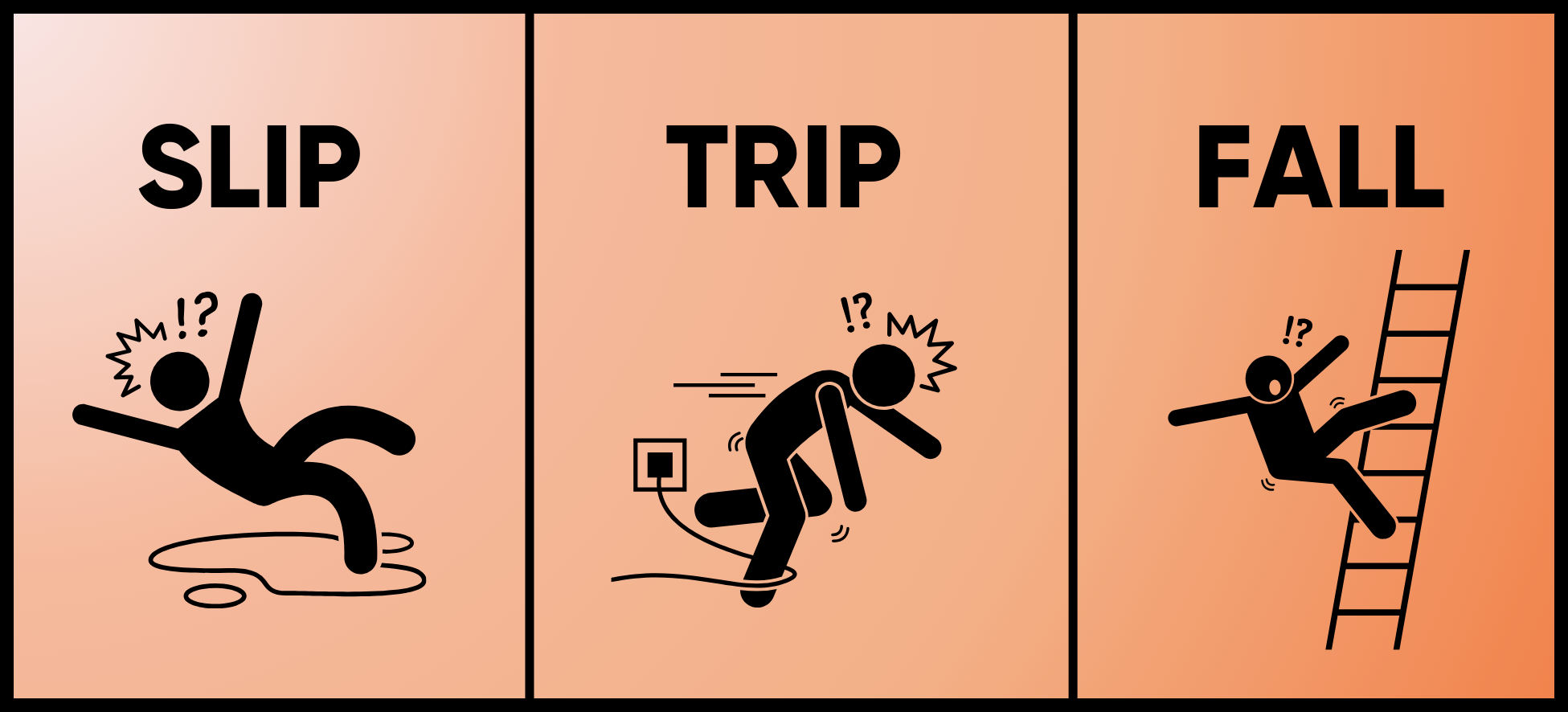Whether it’s a General or Construction Industry, occupational hazards are principal elements that can pose a severe life-threatening menace. Yet, when training amateur employees, supervisors often overlook slips, trips, and fall hazards and focus on other risks, such as controlling and preventing fire, electrical, and chemical exposure.

Despite knowing that Federal Occupational Safety and Health Administration (OSHA) mandates employers to protect workers against all potential workplace hazards and since the safety of everyone is paramount, slip, trip, and fall accidents occur, which put many workers at risk of serious injuries such as strains, cuts, bruises, fractures, and sprains and even in some cases lead to fatalities.
As per the records of OSHA, slips, trips, and falls are considered one of the top three reasons behind work-related injuries while managing day-to-day operations, particularly in the inherently dangerous construction industries.
Let’s dive into the significant differences and factors of each of these hazards separately:
Slips
can be perceived as falling on uniform level due to disequilibrium when there is little to no friction/traction between the foot/footwear and the walking surface.Spills such as water, muck, grease, and oil.
Weather risks (such as ice and snow)
Unanchored, loose mats and carpets
Floors made of marble, concrete, or ceramic tiles
Brand-new waxed flooring or uneven pavements.
Leaping up ladders
Trips
Collapsing on the same level due to disruption in balance when the foot strikes or collides with an object on its way or when someone steps down to a lower gradient due to an uneven surface (misstep).Clutter on the floor or wrinkly carpets or mats
Obstructed view
Dim lighting
Uncovered cables, wires, hoses, and extension cords.
Missing bricks and floor tiles
Broken, inconsistent or irregular steps
Falls
When someone moves downward speedily and freely upon losing their balance from a high to low area against gravity and lands on their torso, feet, or head too hard.Shaky or broken ladders
Ledges lacking a suitable railing
Carrying large items
Failure to use scaffolding guardrails
Ladders positioned riskily
Equipment used improperly for height access.
Preventative Measures:
The best way to deal with accidents and injuries is to prevent them by implementing safety measures and planning strategies to assess the risks.
Below are the seven best solutions to ensure safety against slips, trips, and falls on your job site.
-
1
Awareness and Discipline
It can be incorporated as part of the routine workday with a 10-minute briefing on the condition of the job site, pointing out wet surfaces, fall hazards, or other injury-prone hurdles present on the site.
-
2
Install adequate lighting
Performing tasks under dim lighting where hazardous substances are present can make it challenging to identify obstacles. Thus, investment in lighting showcasing possible dangers that can be avoided is necessary.
-
3
Put up safety hazard signage
Marking or securing locations of openings, holes, or spills deemed dangerous can save injuries and fatalities.
-
4
Get your hands on the correct footwear:
Slip-resistant footwear is a fantastic choice because it provides the finest traction on flat and uneven surfaces.
-
5
Maintain clear walking areas
Keep your work area free of loose items, gravel, garbage, equipment and tools that could prompt someone to trip or fall.
-
6
Institute Wet floor policy
Regularly inspect for leaks and spills, keep the necessary tools on hand for cleanup, put signage to mark the spills, and clear walkways once every 12 hours during snowfall or rain.
Statistics on Fatalities Caused by Slips, Trips and Falls
Trips, slips, and falls most frequently cause workplace injuries. It can result from sprains, strains, fractures, head injuries, and even death.
211,640
occurrences of slips, trips, and falls were reported in 2020.
805
workers lost their lives in falls from high levels in 2020.
136
workers died in falls from the same level in 2020.
15%
of all non-fatal workplace injuries are resulted from workers being struck-by objects or equipment while on the job.
57%
of ladder-related fatalities occur in the construction sector.
33%
of falls on the same level result from trips and slips altogether.
Significance of Enrolling in an Online Safety Training Course:
Although it is the employer’s utmost responsibility to provide entry-level workers with adequate safety training and teach them safety practices before employing them for the job, a worker should also be responsible enough to correctly identify slip, trip, and fall hazards that can potentially cause an injury before undertaking a task.

By enrolling in OSHA 30-Hour General Industry and OSHA 30-Hour Construction Industry pertinent to your particular industry, you will get adequate training on identifying, preventing, and controlling risks related to slips, trips, and falls, as well as other essential site safety topics. You can avert many possible mishaps by consistently following safety procedures.

